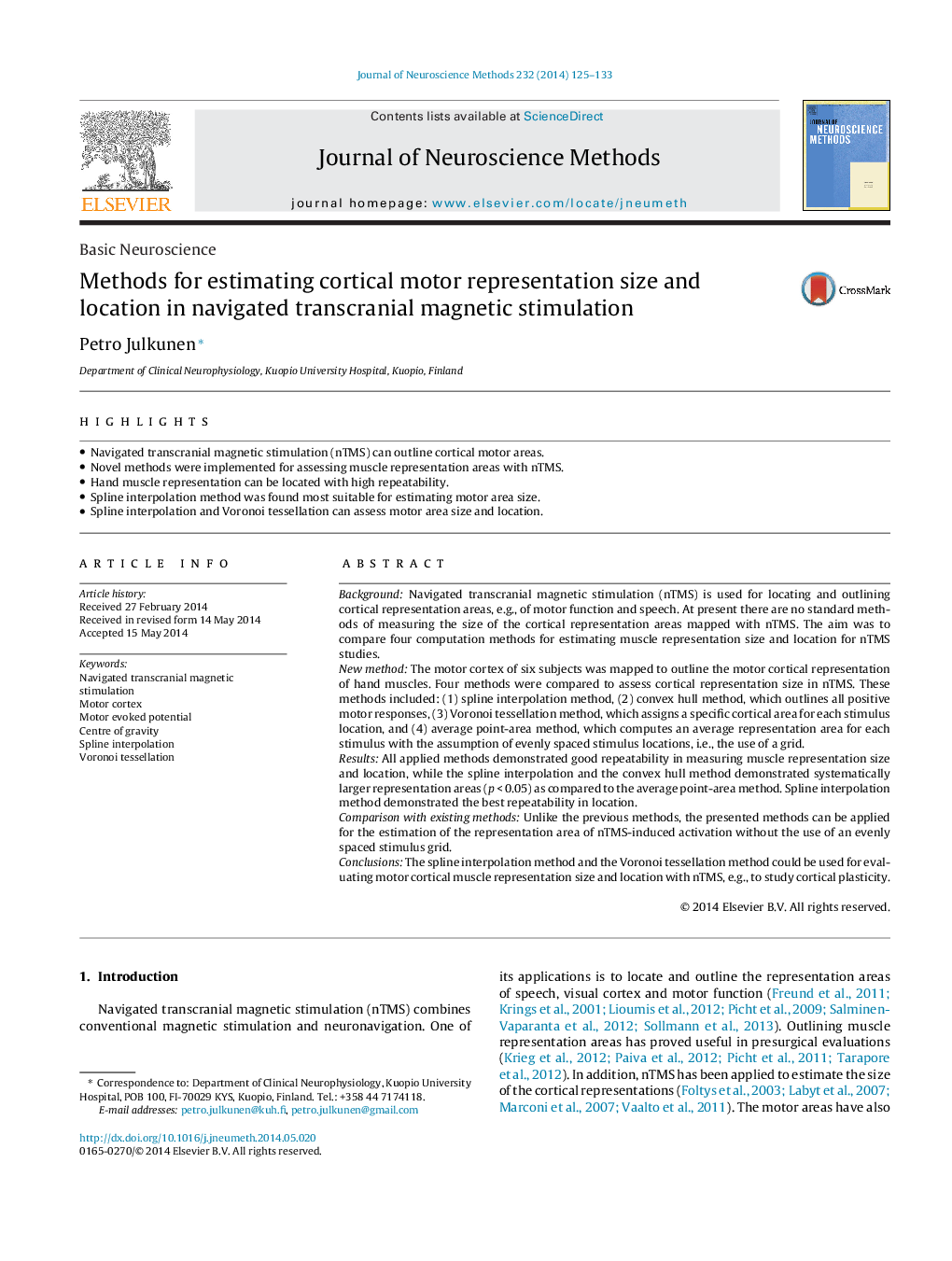| کد مقاله | کد نشریه | سال انتشار | مقاله انگلیسی | نسخه تمام متن |
|---|---|---|---|---|
| 6268685 | 1614637 | 2014 | 9 صفحه PDF | دانلود رایگان |
- Navigated transcranial magnetic stimulation (nTMS) can outline cortical motor areas.
- Novel methods were implemented for assessing muscle representation areas with nTMS.
- Hand muscle representation can be located with high repeatability.
- Spline interpolation method was found most suitable for estimating motor area size.
- Spline interpolation and Voronoi tessellation can assess motor area size and location.
BackgroundNavigated transcranial magnetic stimulation (nTMS) is used for locating and outlining cortical representation areas, e.g., of motor function and speech. At present there are no standard methods of measuring the size of the cortical representation areas mapped with nTMS. The aim was to compare four computation methods for estimating muscle representation size and location for nTMS studies.New methodThe motor cortex of six subjects was mapped to outline the motor cortical representation of hand muscles. Four methods were compared to assess cortical representation size in nTMS. These methods included: (1) spline interpolation method, (2) convex hull method, which outlines all positive motor responses, (3) Voronoi tessellation method, which assigns a specific cortical area for each stimulus location, and (4) average point-area method, which computes an average representation area for each stimulus with the assumption of evenly spaced stimulus locations, i.e., the use of a grid.ResultsAll applied methods demonstrated good repeatability in measuring muscle representation size and location, while the spline interpolation and the convex hull method demonstrated systematically larger representation areas (p < 0.05) as compared to the average point-area method. Spline interpolation method demonstrated the best repeatability in location.Comparison with existing methodsUnlike the previous methods, the presented methods can be applied for the estimation of the representation area of nTMS-induced activation without the use of an evenly spaced stimulus grid.ConclusionsThe spline interpolation method and the Voronoi tessellation method could be used for evaluating motor cortical muscle representation size and location with nTMS, e.g., to study cortical plasticity.
Journal: Journal of Neuroscience Methods - Volume 232, 30 July 2014, Pages 125-133
